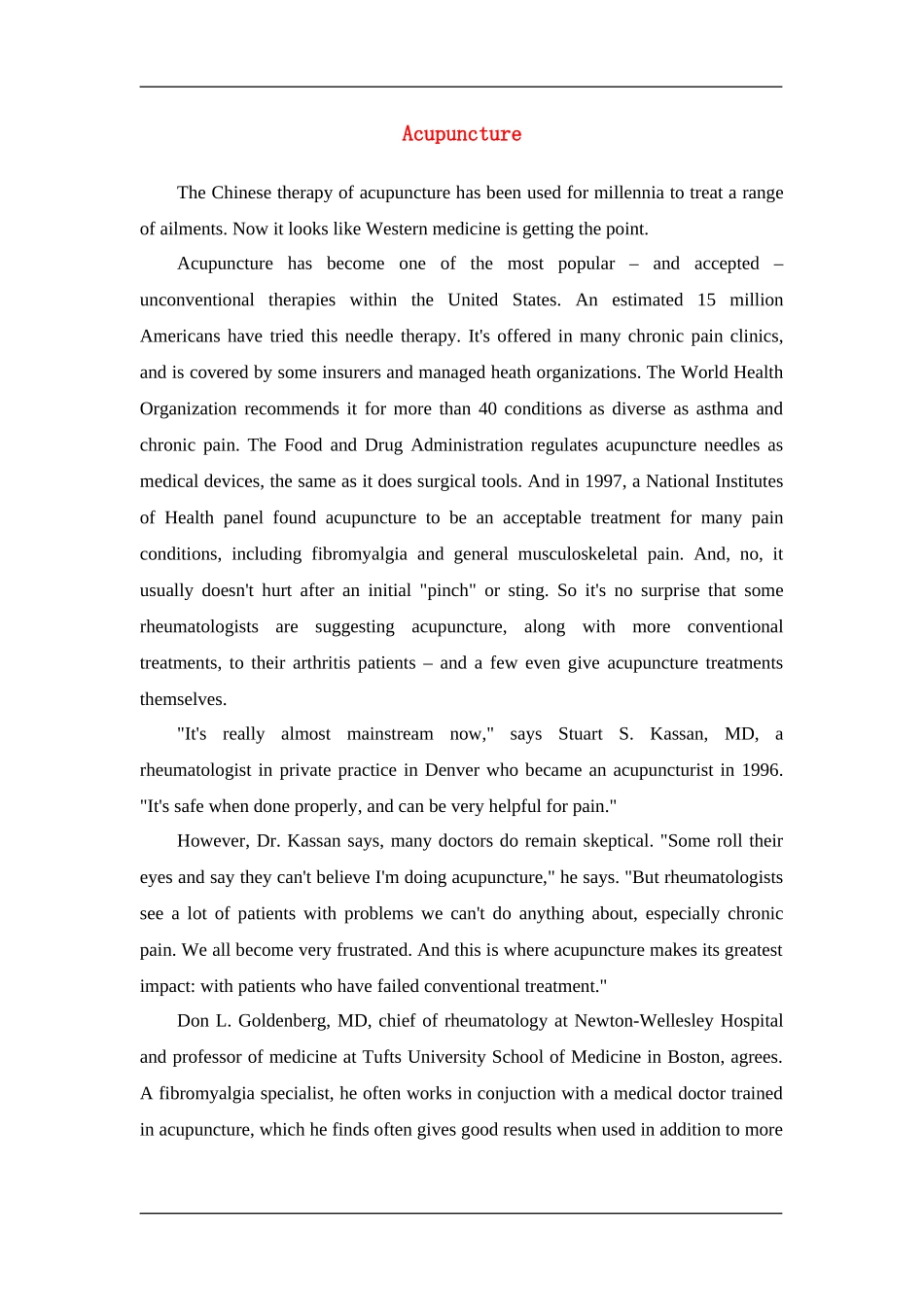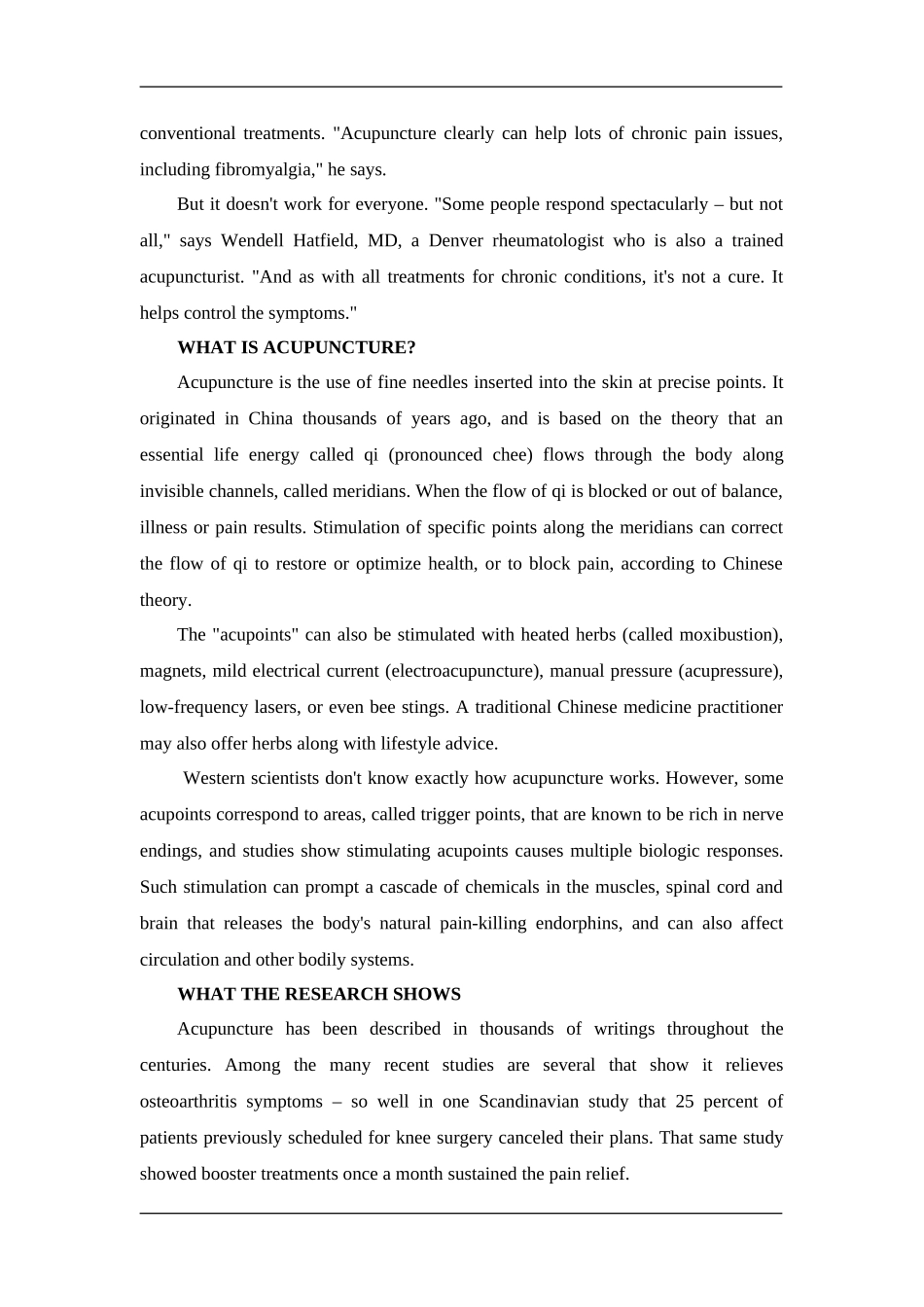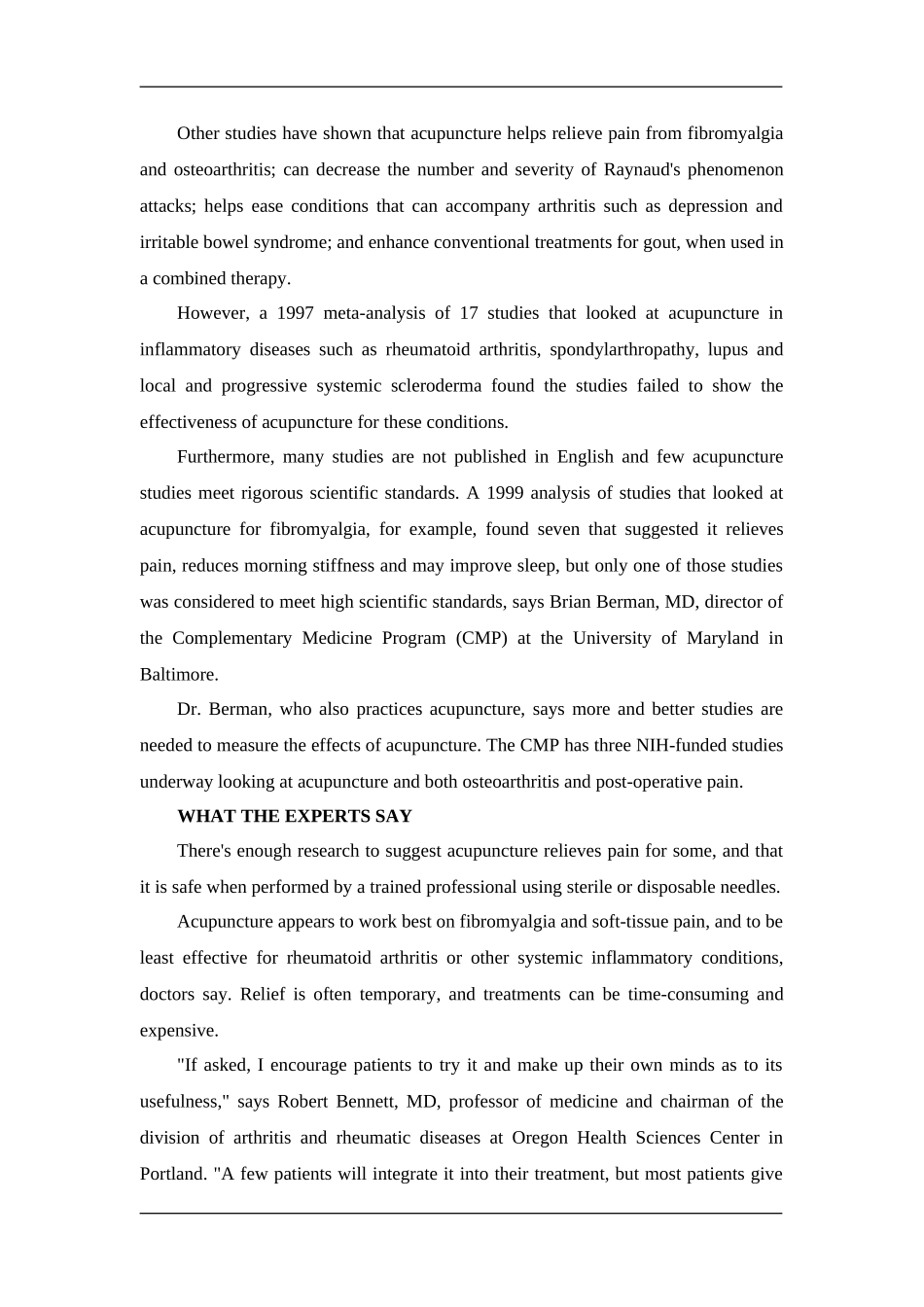AcupunctureThe Chinese therapy of acupuncture has been used for millennia to treat a range of ailments. Now it looks like Western medicine is getting the point.Acupuncture has become one of the most popular – and accepted – unconventional therapies within the United States. An estimated 15 million Americans have tried this needle therapy. It's offered in many chronic pain clinics, and is covered by some insurers and managed heath organizations. The World Health Organization recommends it for more than 40 conditions as diverse as asthma and chronic pain. The Food and Drug Administration regulates acupuncture needles as medical devices, the same as it does surgical tools. And in 1997, a National Institutes of Health panel found acupuncture to be an acceptable treatment for many pain conditions, including fibromyalgia and general musculoskeletal pain. And, no, it usually doesn't hurt after an initial "pinch" or sting. So it's no surprise that some rheumatologists are suggesting acupuncture, along with more conventional treatments, to their arthritis patients – and a few even give acupuncture treatments themselves."It's really almost mainstream now," says Stuart S. Kassan, MD, a rheumatologist in private practice in Denver who became an acupuncturist in 1996. "It's safe when done properly, and can be very helpful for pain."However, Dr. Kassan says, many doctors do remain skeptical. "Some roll their eyes and say they can't believe I'm doing acupuncture," he says. "But rheumatologists see a lot of patients with problems we can't do anything about, especially chronic pain. We all become very frustrated. And this is where acupuncture makes its greatest impact: with patients who have failed conventional treat...


